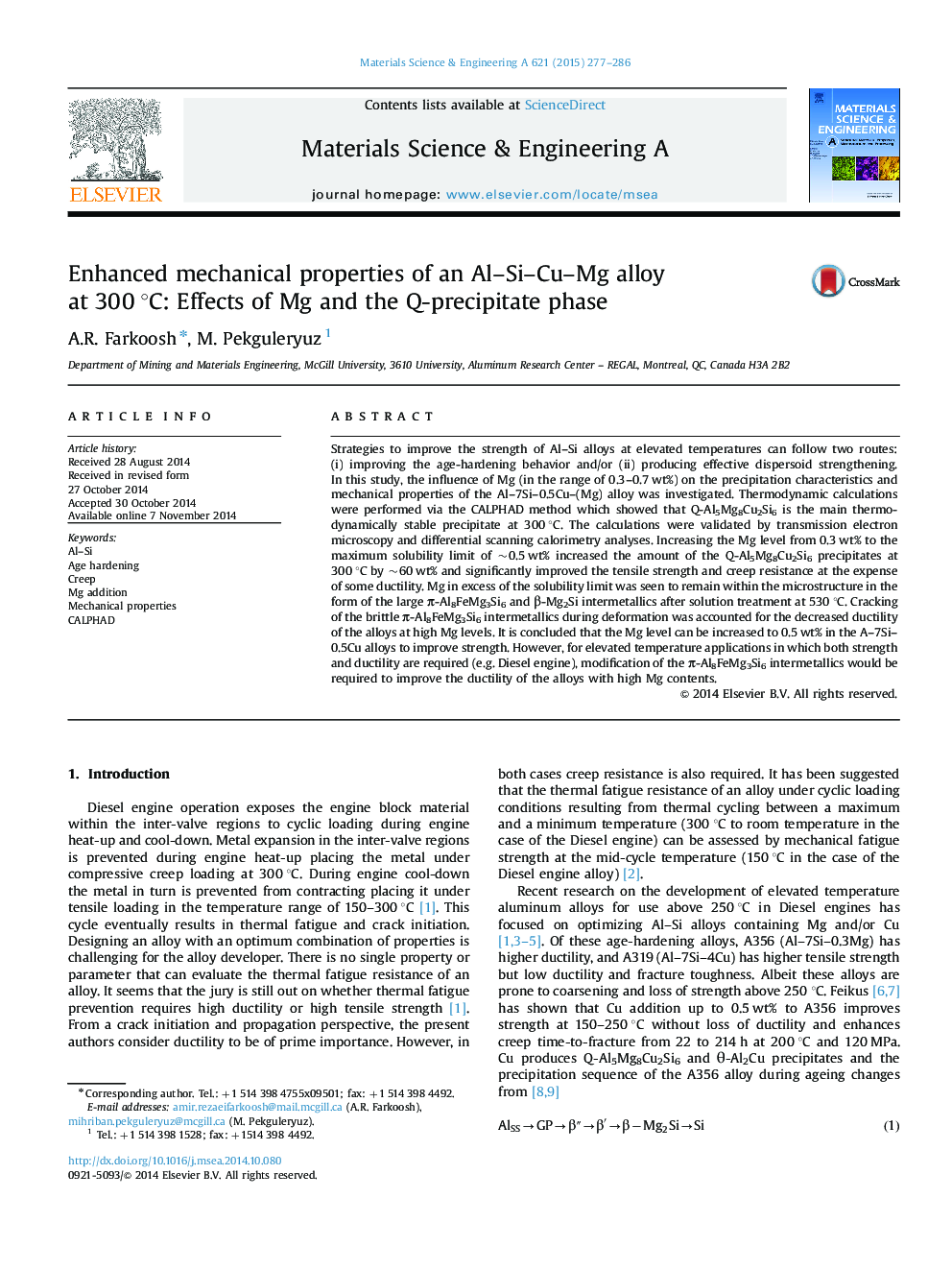| Article ID | Journal | Published Year | Pages | File Type |
|---|---|---|---|---|
| 7979594 | Materials Science and Engineering: A | 2015 | 10 Pages |
Abstract
Strategies to improve the strength of Al-Si alloys at elevated temperatures can follow two routes: (i) improving the age-hardening behavior and/or (ii) producing effective dispersoid strengthening. In this study, the influence of Mg (in the range of 0.3-0.7 wt%) on the precipitation characteristics and mechanical properties of the Al-7Si-0.5Cu-(Mg) alloy was investigated. Thermodynamic calculations were performed via the CALPHAD method which showed that Q-Al5Mg8Cu2Si6 is the main thermodynamically stable precipitate at 300 °C. The calculations were validated by transmission electron microscopy and differential scanning calorimetry analyses. Increasing the Mg level from 0.3 wt% to the maximum solubility limit of ~0.5 wt% increased the amount of the Q-Al5Mg8Cu2Si6 precipitates at 300 °C by ~60 wt% and significantly improved the tensile strength and creep resistance at the expense of some ductility. Mg in excess of the solubility limit was seen to remain within the microstructure in the form of the large Ï-Al8FeMg3Si6 and β-Mg2Si intermetallics after solution treatment at 530 °C. Cracking of the brittle Ï-Al8FeMg3Si6 intermetallics during deformation was accounted for the decreased ductility of the alloys at high Mg levels. It is concluded that the Mg level can be increased to 0.5 wt% in the A-7Si-0.5Cu alloys to improve strength. However, for elevated temperature applications in which both strength and ductility are required (e.g. Diesel engine), modification of the Ï-Al8FeMg3Si6 intermetallics would be required to improve the ductility of the alloys with high Mg contents.
Related Topics
Physical Sciences and Engineering
Materials Science
Materials Science (General)
Authors
A.R. Farkoosh, M. Pekguleryuz,
